Artículos científicos destacados
Esta sección incluye una lista de los artículos científicos más destacados de IMB-CNM publicados en revistas incluidas en el Science Citation Index (SCI), por año de publicación.
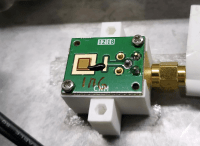
Accurate neutron detection in mixed photon-neutron and pulsed radiation fields is technically challenging, impacting industrial and medical applications. This paper presents the first measurements of thermal neutrons in conventional radiotherapy accelerators using a silicon carbide (SiC) P–N diode with different neutron converters. SiC detectors enable real-time estimation of secondary thermal neutron contributions, crucial for emerging radiotherapy techniques requiring precise neutron fluence monitoring. Beyond medical applications, the presented detectors show potential for neutron dosimetry, radiation monitoring, nuclear safety, and scientific research. The SiC diode active detection layer is less than 30 µm thick, and provides excellent gamma rejection, allowing discrimination of neutrons-induced events in mixed radiation fields. Experimental tests conducted on a TrueBeam radiotherapy LINAC demonstrated a thermal neutron detection efficiency of (4.32 ± 0.02)% for a (50 ± 10) µm thick LiF neutron converter. The detector, placed at 1.2 m from the accelerator isocenter, was used to measure neutron fluences at different monitor unit (MU) rates, ranging from 100 to 600 MU/min, with the LINAC operating at 15 MV. Under these conditions, the detector exhibited good linearity, without saturation or dead time effects.
Sci Rep 15, 30543 (2025). https://doi.org/10.1038/s41598-025-13052-w
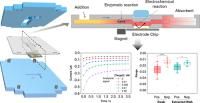
Providing viral load numbers of infection events aids in the identification of disease severity and in the effective overall patient management. Gold-standard polymerase chain reaction (PCR) techniques make this possible but cannot be applied at the point of need and in low-resource settings. Here, we report on the development of a compact analytical platform that can detect a conserved sequence of the RNA of severe acute respiratory syndrome-coronavirus 2 (SARS-CoV-2) in 40 min in nasopharyngeal swab samples without the need for any previous purification or gene amplification steps. It combines electrochemical and paper fluidic approaches together with a sandwich hybridization assay performed on magnetic nanoparticles (MNPs) modified with a tailor-designed capture DNA hairpin. The device proves to quantitatively detect viral RNA in a retrospective study carried out with nasopharyngeal swab samples. A sensitivity of 100% and a specificity of 93% were estimated by the receiver operating characteristic (ROC) analysis. However, although molar concentration values of the target RNA sequence are provided, these estimates do not fully correlate with the viral load numbers estimated by RT-qPCR over the whole Ct sample range. Empirical studies have been carried out that have provided clear insights into this hurdle and simple solutions to overcome it, without depriving the device of the features required for potential use in a point-of-care (PoC) environment.
Anal. Chem. 2025, 97, 22, 11863–11873. DOI: 10.1021/acs.analchem.5c01605
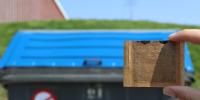
Internet-of-Things (IoT) is considered one of the primary enablers of the next digital transformation wave. Generating and exchanging data between the increasing number of delocalized sensors comes with the need for high-performance portable power sources that also meet environmental and social responsibility standards. This article presents a portable power source to meet the energy requirements of IoT devices in the smart packaging sector that has been designed-by-purpose in an ecologically benign way since the early development stage. To minimize the environmental impact throughout its life cycle, the battery follows the value chain of paper and cardboard, from material sourcing to disposability. Naturally abundant materials, such as cellulose derivates and alginate biopolymers, are prioritized to create the separator and contain the redox species. Manufacturing techniques, easily implementable in the packaging industry, are used to fabricate an adhesive label-like battery (based on layered components) and engrave the current collectors, via laser-induced graphene. The prototype's energy adaptation capability is demonstrated by directly powering two applications particularly appealing for smart packaging, i.e., a printed electrochromic display and a wireless tracker device. Once depleted, the battery is compatible with paper and cardboard recycling standardized processes. The reconceptualization of the whole battery life cycle leads to the generation of a disruptive power source concept that aims to be an enabler of a sustainable digitalization of society.
Designed-by-purpose power sources: a cardboard primary battery for smart packaging. Energy and Environmental Science. DOI: 10.1039/D4EE00306C
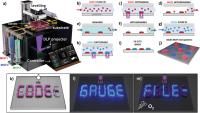
Patterning Metal-Organic Frameworks (MOFs) is essential for their use in sensing, electronics, photonics, and encryption technologies. However, current lithography methods are limited in their ability to pattern more than two MOFs, hindering the potential for creating advanced multifunctional surfaces. Additionally, balancing design flexibility, simplicity, and cost often results in compromises. This study addresses these challenges by combining Digital-Light Processing (DLP) with a capillary-assisted stop-flow system to enable multimaterial MOF patterning. It demonstrates the desktop fabrication of multiplexed arbitrary micropatterns across cm-scale areas while preserving the MOF's pore accessibility. The ink, consisting of a MOF crystal suspension in a low volatile solvent, a mixture of high molecular weight oligomers, and a photoinitiator, is confined by capillarity in the DLP projection area and quickly exchanged using syringe pumps. The versatility of this method is demonstrated by the direct printing of a ZIF-8-based luminescent oxygen sensor, a 5-component dynamic information concealment method, and a PCN-224-based colorimetric sensor for amines, covering disparate pore and analyte sizes. The multi-MOF capabilities, simplicity, and accessibility of this strategy pave the way for the facile exploration of MOF materials across a wide range of applications, with the potential to significantly accelerate the design-to-application cycle of MOF-based devices.
C. Carbonell, M. Linares-Moreau, S. M. Borisov, P. Falcaro, Multimaterial Digital-Light Processing of Metal-Organic Framework (MOF) Composites: A Versatile Tool for the Rapid Microfabrication of MOF-Based Devices. Adv. Mater. 2024, 2408770. DOI: 10.1002/adma.202408770

Electrochemiluminescence (ECL) is widely employed for medical diagnosis and imaging. Despite its remarkable analytical performances, the technique remains intrinsically limited by the essential need for an external power supply and electrical wires for electrode connections. Here, we report an electrically autonomous solution leading to a paradigm change by designing a fully integrated all-optical wireless monolithic photoelectrochemical device based on a nanostructured Si photovoltaic junction modified with catalytic coatings. Under illumination with light ranging from visible to near-infrared, photogenerated holes induce the oxidation of the ECL reagents and thus the emission of visible ECL photons. The blue ECL emission is easily viewed with naked eyes and recorded with a smartphone. A new light emission scheme is thus introduced where the ECL emission energy (2.82 eV) is higher than the excitation energy (1.18 eV) via an intermediate electrochemical process. In addition, the mapping of the photoelectrochemical activity by optical microscopy reveals the minority carrier interfacial transfer mechanism at the nanoscale. This breakthrough provides an all-optical strategy for generalizing ECL without the need for electrochemical setups, electrodes, wiring constraints, and specific electrochemical knowledge. This simplest ECL configuration reported so far opens new opportunities to develop imaging and wireless bioanalytical systems such as portable point-of-care sensing devices.
Journal of the American Chemical Society 2023 145 (31), 17420-17426. DOI: 10.1021/jacs.3c05856
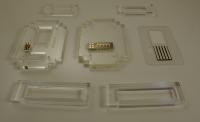
Here, we show the particular combination of paper-microfluidic technology, electrochemical transduction, and magnetic nanoparticle-based immunoassay approaches to produce a unique, compact, and easily deployable multiplex device to simultaneously measure interleukin-8, tumor necrosis factor-α, and myeloperoxidase biomarkers in sputum, developed with the aim of facilitating the timely detection of acute exacerbations of chronic obstructive pulmonary disease. The device incorporates an on-chip electrochemical cell array and a multichannel paper component, engineered to be easily aligned into a polymeric cartridge and exchanged if necessary. Calibration curves at clinically relevant biomarker concentration ranges are produced in buffer and artificial sputum. The analysis of sputum samples of healthy individuals and acutely exacerbated patients produces statistically significant biomarker concentration differences between the two studied groups. The device can be mass-produced at a low cost, being an easily adaptable platform for measuring other disease-related target biomarkers.
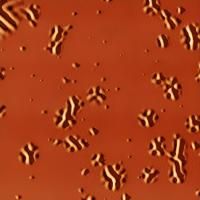
The understanding of the dynamics of a glass above its devitrification temperature remains incomplete. Here, we build a spatio-temporal map of the relaxation dynamics of a highly stable glass into its supercooled liquid using real-time atomic force microscopy imaging. This methodology enables direct visualization of the progression of the liquid phase and clarifies and quantifies the presence of localized fast mobility regions separated by giant length scales. Our data establish a clear correlation between dynamic length and time scales in glasses. This approach may also be applicable to unveil the microscopic structure and dynamics of other glass-forming systems with much shorter length and time scales, including liquid-cooled glasses.
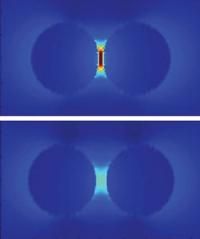
Soft optomechanical systems have the ability to reversibly respond to optical and mechanical external stimuli by changing their own properties (e.g., shape, size, viscosity, stiffness, color or transmittance). These systems typically combine the optical properties of plasmonic, dielectric or carbon-based nanomaterials with the high elasticity and deformability of soft polymers, thus opening the path for the development of new mechanically tunable optical systems, sensors, and actuators for a wide range of applications. This review focuses on the recent progresses in soft optomechanical systems, which are here classified according to their applications and mechanisms of optomechanical response. The first part summarizes the soft optomechanical systems for mechanical sensing and optical modulation based on the variation of their optical response under external mechanical stimuli, thereby inducing mechanochromic or intensity modulation effects. The second part describes the soft optomechanical systems for the development of light induced mechanical actuators based on different actuation mechanisms, such as photothermal effects and phase transitions, among others. The final section provides a critical analysis of the main limitations of current soft optomechanical systems and the progress that is required for future devices.
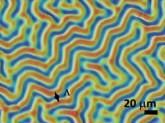
The emerging stretchable photonics field faces challenges, like the robust integration of optical elements into elastic matrices or the generation of large optomechanical effects. Here, the first stretchable plasmonic-enhanced and wrinkled Fabry–Pérot (FP) cavities are demonstrated, which are composed of self-embedded arrays of Au nanostructures at controlled depths into elastomer films. The novel self-embedding process is triggered by the Au nanostructures’ catalytic activity, which locally increases the polymer curing rate, thereby inducing a mechanical stress that simultaneously pulls the Au nanostructures into the polymer and forms a wrinkled skin layer. This geometry yields unprecedented optomechanical effects produced by the coupling of the broad plasmonic modes of the Au nanostructures and the FP modes, which are modulated by the wrinkled optical cavity. As a result, film stretching induces drastic changes in both the spectral position and intensity of the plasmonic-enhanced FP resonances due to the simultaneous cavity thickness reduction and cavity wrinkle flattening, thus increasing the cavity finesse. These optomechanical effects are exploited to demonstrate new strain-sensing approaches, achieving a strain detection limit of 0.006%, i.e., 16-fold lower than current optical strain-detection schemes.

The miniaturization of robotic tools and probes enables the fundamental study of mechanical properties of cells and tissues.
Science Robotics, 25 Jan 2023, Vol 8, Issue 74, DOI: 10.1126/scirobotics.adf9996




